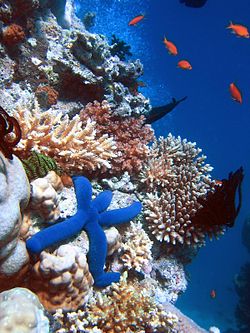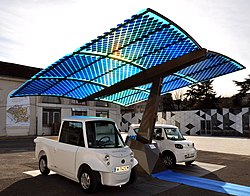 |
| Venn diagram of sustainable development: at the confluence of three constituent parts |
The following outline is provided as an overview of and topical guide to sustainability:
Contents
- Essence of sustainability
- Taxonomy
- Sub-fields of sustainability science
- Sub-fields of sustainability governance
- Related disciplines
- Biodiversity
- Levels of biological organisation
- Politics of sustainability
- Population control
- Environmental technology
- Energy conservation
- Over consumption
- Food
- Water
- Materials
- Sustainability organizations
- Sustainability publications
- Sustainability advocates
- See also
- References
Sustainability – capacity to endure. For humans, sustainability is the long-term maintenance of well being, which has environmental, economic, and social dimensions, and encompasses the concept of stewardship and responsible resource management.




